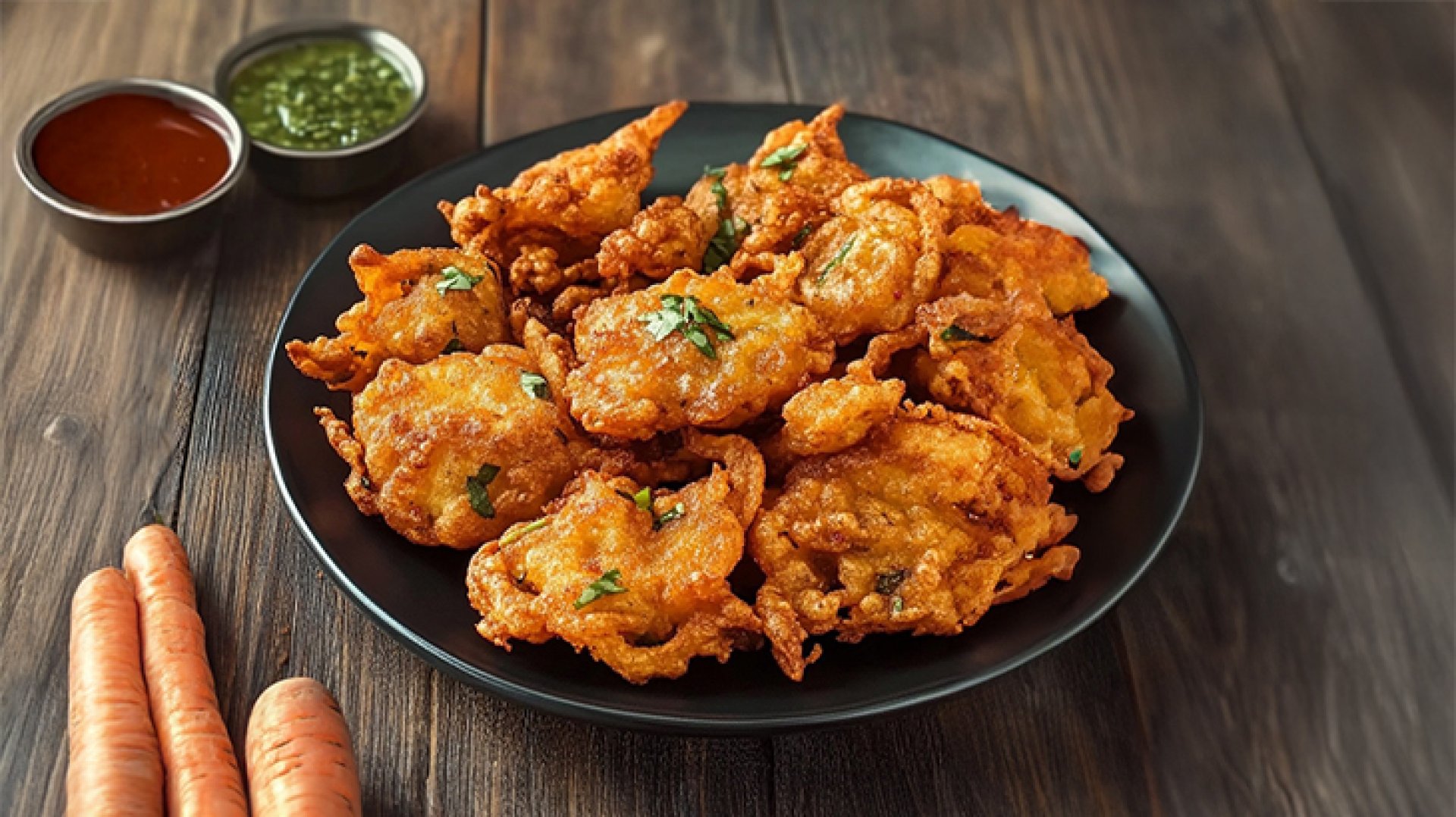Pakora

What is Pakora?
Pakora is a beloved Indian snack made from a variety of vegetables such as potatoes, onions, carrots, and leafy greens. These vegetables are cut into bite-sized pieces, dipped in a spiced chickpea flour batter seasoned with curry powder, turmeric, and black pepper, then deep-fried until golden and crispy. Pakoras are aromatic with spices, crunchy on the outside, and soft inside, making them perfect as appetizers or festive snacks.
Origins and Historical Background
Pakora has a long-standing history in Indian culinary culture, with evidence of fried foods dating back to the 4th or 5th century BCE. During this period, trade and cultural exchanges introduced diverse cooking techniques. Pakora reflects the traditional wisdom of using seasonal vegetables and local spices, highlighting Indias rich culinary heritage.
Regional Popularity in India
Pakora is especially popular in rural Indian households due to its simplicity, affordability, and quick preparation, making it ideal for celebrations and gatherings. During the Mughal era, Pakora recipes were influenced by Persian and Central Asian cuisines, incorporating exotic spices like saffron and nuts.
Different regions in India have their own variations: in northern India, onion and potato pakoras are favored, often served with hot tea during the monsoon season; in southern India, pakoras typically include curry leaves and mustard seeds; in Gujarat, Bhajias are made with spinach, eggplant, and sweet potatoes; while in Bengal, Beguni features thinly sliced eggplant dipped in batter and fried.
Spread and Popularity Beyond India
Pakora has gained popularity in neighboring countries such as Pakistan, Bangladesh, and Nepal, especially during Ramadan when it is commonly eaten at iftar meals. Today, pakora is enjoyed worldwide, brought by Indian and Pakistani diaspora communities to countries like the United States, the UK, and Canada. Modern variations include versions made with eggs, meat, and seafood.


